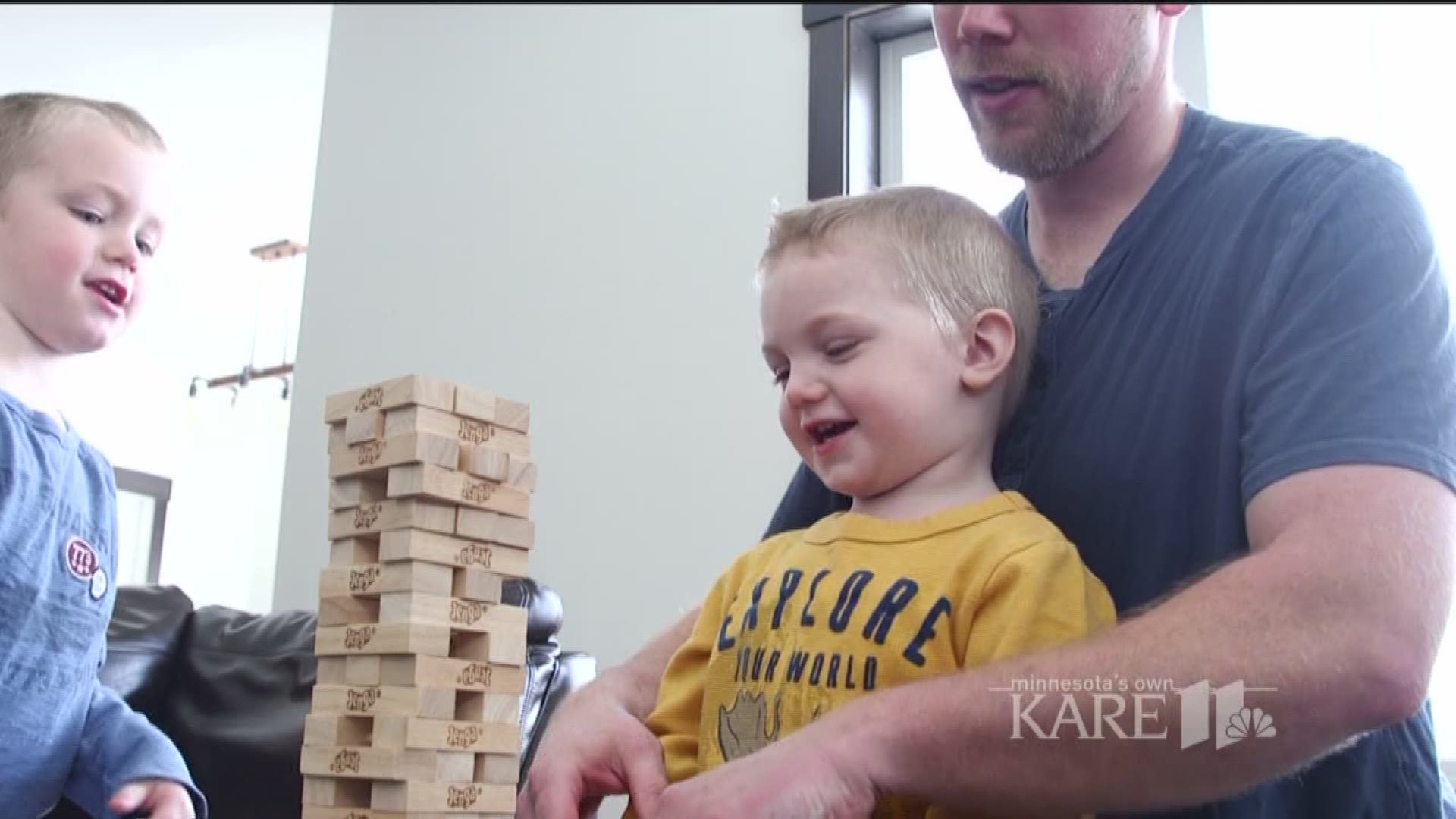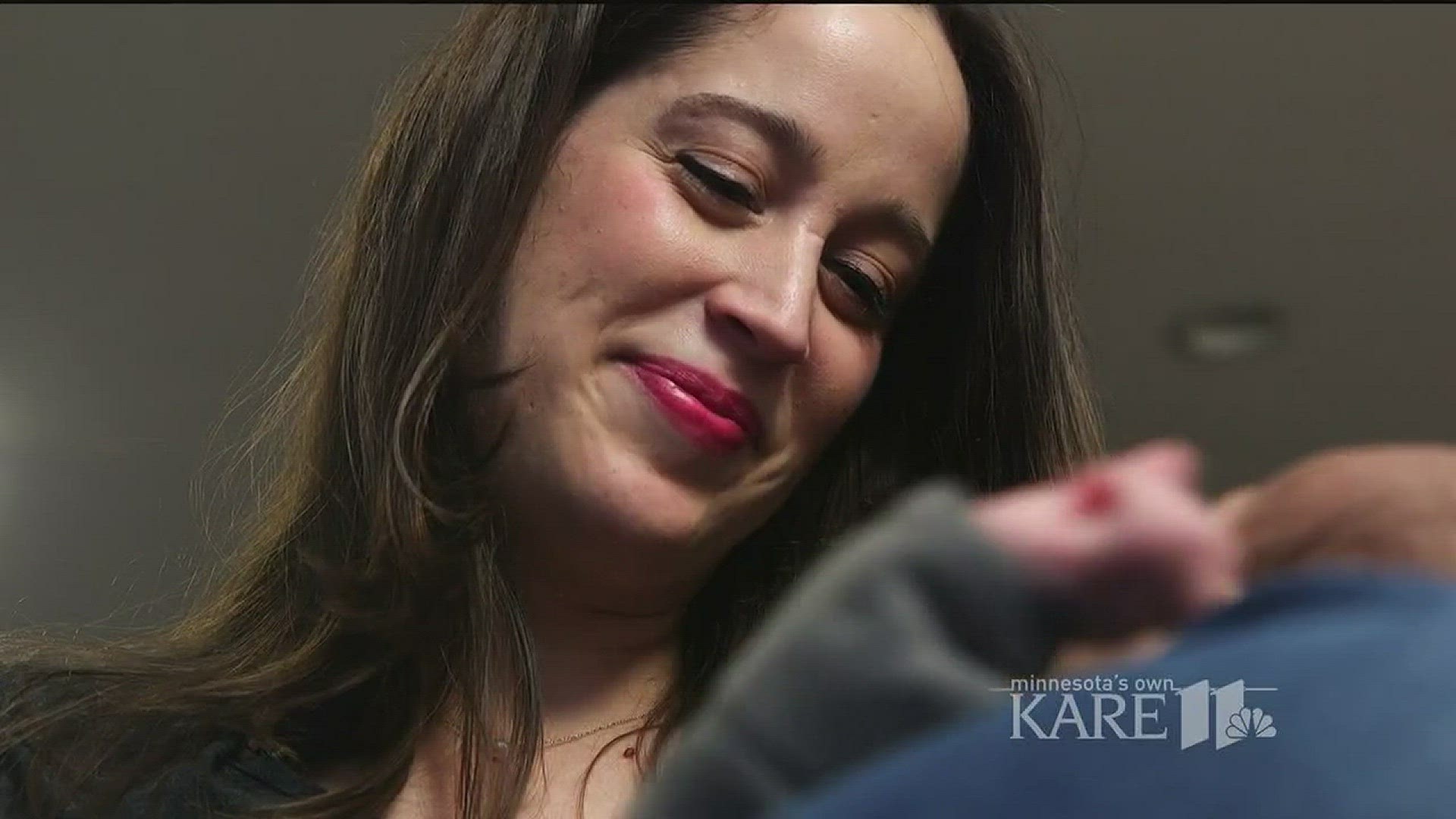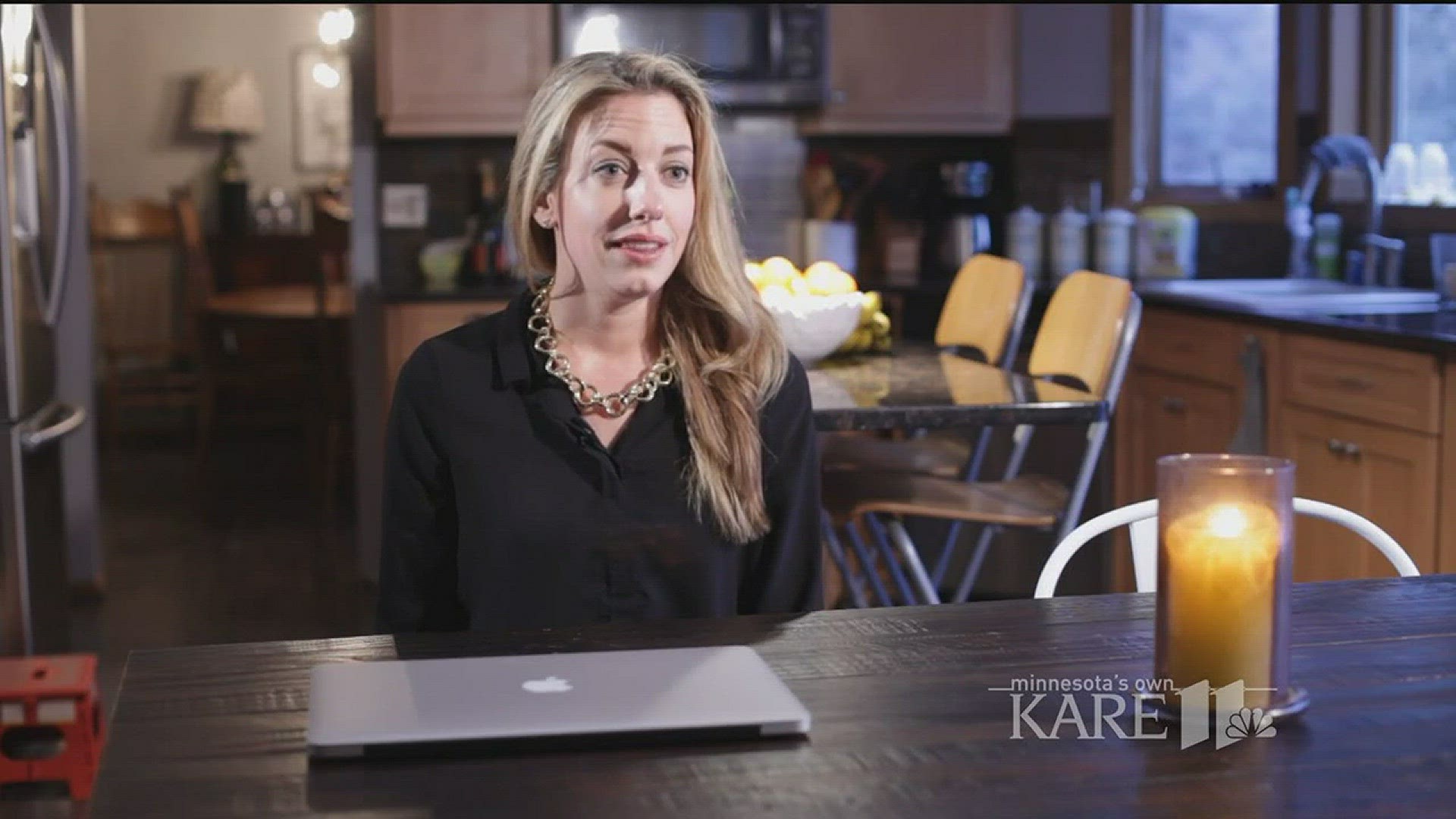GOLDEN VALLEY, Minn. – The debate over whether to offer paid leave for new parents in Minnesota is gaining momentum after a growing number of major companies have boosted the benefit, but progress still inches along as an interim paid parental leave policy for Minnesota’s state workers remains in limbo.
As U.S. employers face increasing social, political and competitive pressures to provide the benefit to attract and retain talent, Minnesota-based companies like 3M, Target, Land O’Lakes, Wells Fargo and Cargill have all boosted their paid parental leave policy in the past year.
In January, 3M announced a bold step of boosting its parental leave to 20 weeks – 10 weeks paid and 10 unpaid - to both mothers and fathers following the birth or adoption of a child. Parents taking leave at 3M can also return to work on a part-time basis.
While the private sector makes progress on the issue, the United States remains a global outlier as the only industrialized nation without a national paid parental leave policy, but the prospect of paid leave has bipartisan support. During his campaign, President Donald Trump publicly stated he supports six weeks paid leave for new parents if their employer doesn't offer the benefit.
MINNESOTA PAID PARENTAL LEAVE IN LIMBO
On a statewide level, Minnesota state government employees were recently awarded six weeks after a birth or adoption, after an approval from Governor Dayton and a push by the Minnesota Association of Professional Employees, or MAPE.
The Republican-controlled legislature has not yet signed off on making the benefit permanent for approximately 35,000 state workers, and without official approval, the provision could expire at the end of the legislative session in May. Some Republican leaders in the Minnesota House and Senate have also expressed concern over the process by which the policy was approved and the expense of the benefit when compared to other spending priorities, preferring to leave paid parental leave policies in the hands of employers.
The state initially estimated that about 400 to 500 workers would use the benefit each year, at a total cost of $2 million.
Blair Sevcik, 31, a Minnesota Department of Health epidemiologist, was one of the first employees to take advantage of the new measure in January with the birth of her second son and said it’s eased the mental and financial stress for her family. The Maple Grove mother also said the extra time has kept her son away from the early exposure of daycare illnesses and helped establish a breastfeeding relationship.
“This policy has been very meaningful for my family. I have been saving my sick time and vacation time ever since my first child was born and that was stressful, we had a few weeks unpaid, and that was a stressful time for my family not to have a paycheck from me,” said Sevcik, who last month stood with her MAPE union leaders and asked lawmakers to consider making the leave permanent for state workers.
Sevcik said benefits like paid parental leave help affirm her decision to keep working for the state instead of seeking family work-life balance with a private employer.
Retaining Minnesota government employees as the state’s second-largest employer is one key goal of the legislation introduced by Rep. Laurie Halverson, DFL-Eagan, who noted women under age 44 are leaving government jobs at double the total turnover rate for all state employees. Halverson said she left the workforce after she adopted a child, and her employer did not provide paid leave. She wants government benefits to be on par with the private sector.
“It was a sad day for me to have to leave the workforce to have to make that choice," said Halverson. "It’s a choice that a lot of parents can’t make and others don’t want to make."
MAKING STATEWIDE PARENTAL LEAVE REALITY
Only about one in 10 American private-sector employees work for a company that provides paid leave for new parents, but a new Pew Research Center study shows they want it — for moms and dads.
A Pew survey of U.S. adults published Thursday shows 82 percent of Americans think mothers should have paid maternity leave and 69 percent of fathers should have paid paternity leave. The report showed fathers take an average of one week following the birth or adoption of a child and mothers take 11 weeks. But the public is sharply divided on who should cover the cost, as most paid leave supporters think companies, as opposed to the government, should fund family leave, according to the survey.
“We are still relying on companies to step forward, that is an incremental process right now and it is important that these companies are taking a lead and showing that it’s possible and desirable to offer this kind of benefit, but I would say Minnesota – like all other states in the country and country as a whole – we are all still trying to move ahead in the space,” said Debra Fitzpatrick, director of the Center on Women, Gender and Public Policy at the University of Minnesota Humphrey School of Public Affairs.
Fitzpatrick noted 25 percent of women return to their jobs within two weeks of giving birth, and said in Minnesota, 40 percent of workers under the age of 35 take leave without any compensations.
Those are among a few key findings in a 200-page report Fitzpatrick presented to the Minnesota legislature last year detailing how paid parental leave program can be implemented on a statewide level through a payroll tax. She calls her research the most comprehensive report in the country on the issue.
She discovered families needing paid leave could use the state’s existing unemployment system infrastructure and file a claim, much in the same way unemployment insurance works. New Jersey, Rhode Island, and California already have similar programs, and New York will launch a similar program in 2018.
“What surprised me is how much there is to build on, how our state is really in a position to be able to deliver this important benefit, and another thing I think is a takeaway, is how little it would cost, when you think about an insurance model where everybody is contributing," said Fitzpatrick. "It’s a cup of coffee a week for most workers."
Fitzpatrick noted offering paid parental leave can be difficult for small businesses, but this option could alleviate the stress of the benefit for a smaller employer.
“I’ve been working on this issue for a decade, and I’ve never seen so much conversation, so much talk about the need to do something about this, so that makes me hopeful,” she said.
GREAT DISPARITIES REMAIN
In Minnesota, great disparities remain when it comes to who has access to paid parental leave, showing a clear gap and economic inequity between women across many demographics, varying considerably by industry and by the type and size of the employer.
In 2016, 14 percent of civilian workers had access to paid family leave, according to the National Compensation Survey (NCS), conducted annually by the federal Bureau of Labor Statistics.
The recent Pew Research study showed financial impact of taking leave can be substantial. About eight of 10 workers who took leave and received either no or a portion of their pay said they had to cut back on spending to make ends meet. Almost four out of 10 went into debt, while one-third delayed paying their bills. Across all incomes, almost two out of 10 leave-takers went on public assistance.
In Hugo, Jamie Randt, 29, is soon expecting her first child, a baby girl. She has worked as hairstylist for nine years at a national hairstyling chain that does not offer maternity leave.
Instead, Randt will use her two weeks’ vacation as her paid leave, while she and her husband work to save the funds for a few weeks beyond that.
“I will be lucky to make it the six or eight weeks we are hoping," she said. "In a perfect world, we would get to take off all the time we wanted, to not have to worry about losing your house, or livelihood, or making sure my electric stays on so I have heat for our new child. It’s very stressful.”
“I do work for a great company and have a great job, but it kind of stinks when you have to rush to go back to it and let that bubble of blissfulness go,” she added.
3M’S NEW EXTENDED PARENTAL LEAVE PROGRAM
In Baldwin, Wisconsin, Monica and Scott Miller’s newborn baby daughter Ella benefits from an extended leave enacted in the beginning of 2017.
The Millers, both 34, were on their way home from the hospital when they got a call about 3M’s new paid parental leave policy.
“My boss texted me and said, 'Monica, you need to call me ASAP, 3M just announced a new benefit or plan that will extremely help your family,'” said Monica Miller. “For us it was a dream come true to have that time because I was planning to go back when she was 6 weeks old.”
Monica Miller is easing back into work on a flexible schedule, and after she returned to work, her husband took his leave so their baby could stay home longer. The couple has two older children and is relishing what a longer leave means for their family in comparison to the shorter time off with their other sons.
“She gets to be home for the first five months of her life," said Monica Miller. "We’ve been there for her and gotten to see it all.”
For 3M, the move helps attract and retain talent, and offer a more flexible workplace, and after employee feedback, decided to take the bold step, according to Mike Anderson, Director of 3M Global Benefits. Already, 200 employees have taken advantage of the new policy.
“The higher number right now are the men than the women, and the numbers sort of speak for it," said Anderson. "I think it's just reflecting a change in society, 30 years ago, men would have been less apt to do this, but I think the workforce is changing, people are trying to balance work and home, and be committed to family."
CROWDFUNDING MATERNITY LEAVE
In the beginning of 2017, Margi Scott, 31, of Plymouth, launched Take 12, a maternity leave registry she characterizes as “crowdfunding meets baby registry.”
Her idea for a maternity leave registry came after her third pregnancy when she delivered twins. After being diagnosed with a rare liver condition during pregnancy, Scott delivered her twins prematurely. The financial stress to her family of six after minimal paid leave prompted her to research the issue, and she discovered thousands of women were already crowdfunding their maternity leave on fundraising sites.
“I realized there should be a safe place for women to go where they don’t feel like they are begging for money, but there are simply asking for what they want and really need most of all, which is time with their baby instead of stuff,” said Scott. “The cost to our family was greater than ever before and that’s when I realized there is a desperate need out there.”
On Take 12, mothers don’t register for baby gifts and gear, but instead, a profile features their story and need for more time. Dozens of women have registered, many in crisis health situations.
“I developed a gallbladder disorder along the way that has made me severely ill. The situation is getting dire, even one dollar helps,” wrote one mother in her profile.
Emily Conley, of Plymouth, signed up on Take12.com for her second child due this summer, and shares another perspective.
"What I would like more people to understand about parental leave in this country is that it’s not just a problem for women in financial crisis, it's a problem for any working parent whose income isn't a luxury, which is most of us. As a nation, we are way behind the rest of the Western world on this issue. Take 12 is elevating the conversation,” said Conley.
Target, General Mills, Thomson Reuters, Star Tribune, the University of Minnesota and the cities of St. Paul and Minneapolis are among other local Minnesota employers that offer paid parental leave. Many others don’t share or disclose their paid parental leave policies.
Currently, the Family Medical Leave Act (FMLA), gives women 12 weeks job-protected unpaid leave, but many workers don't qualify for that. Twelve percent of U.S. non-government workers have access to paid family leave, according to the Department of Labor.



